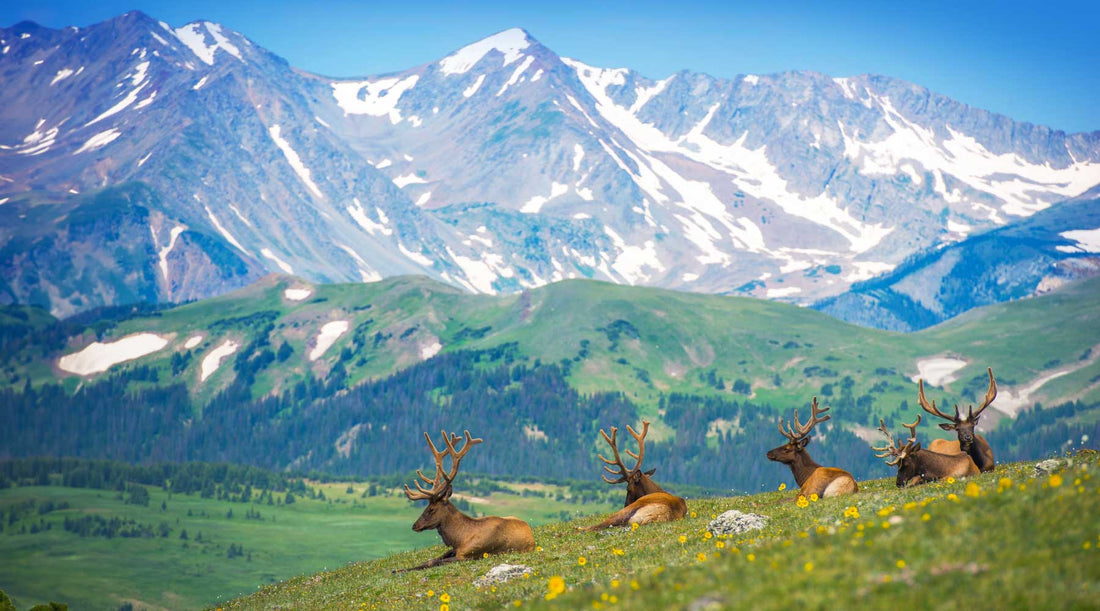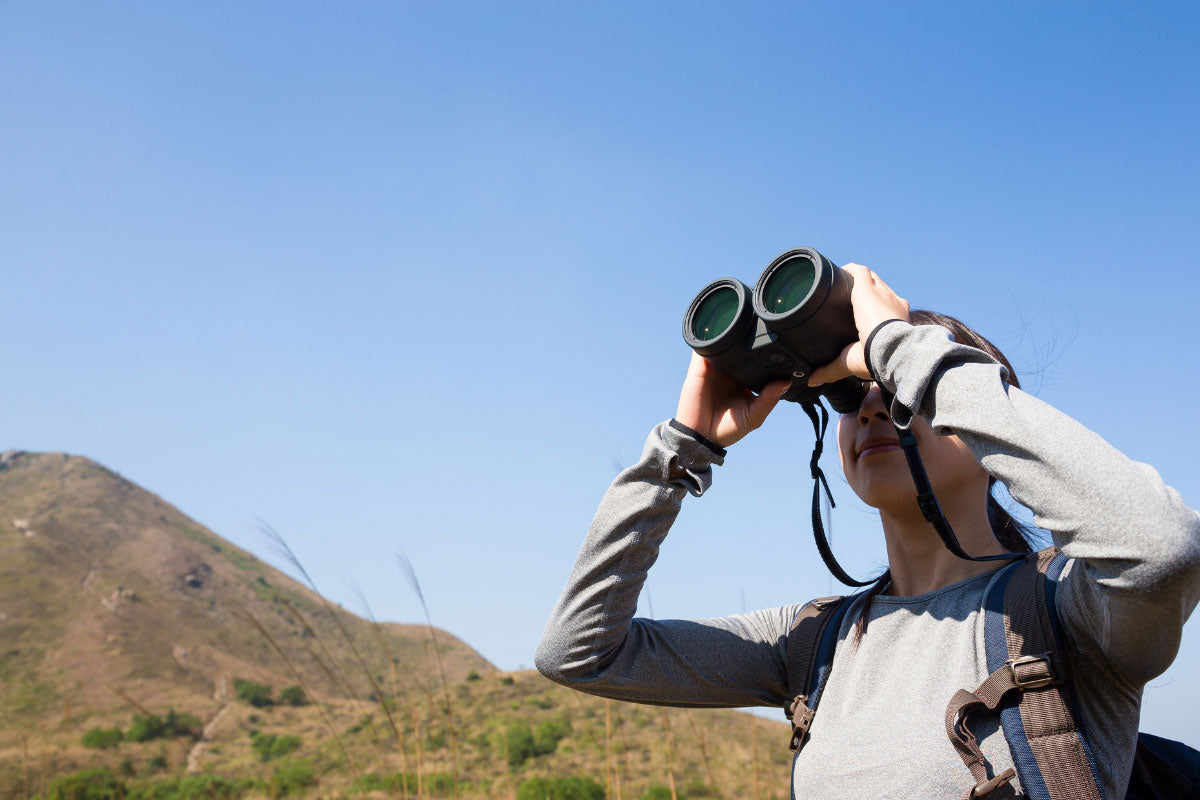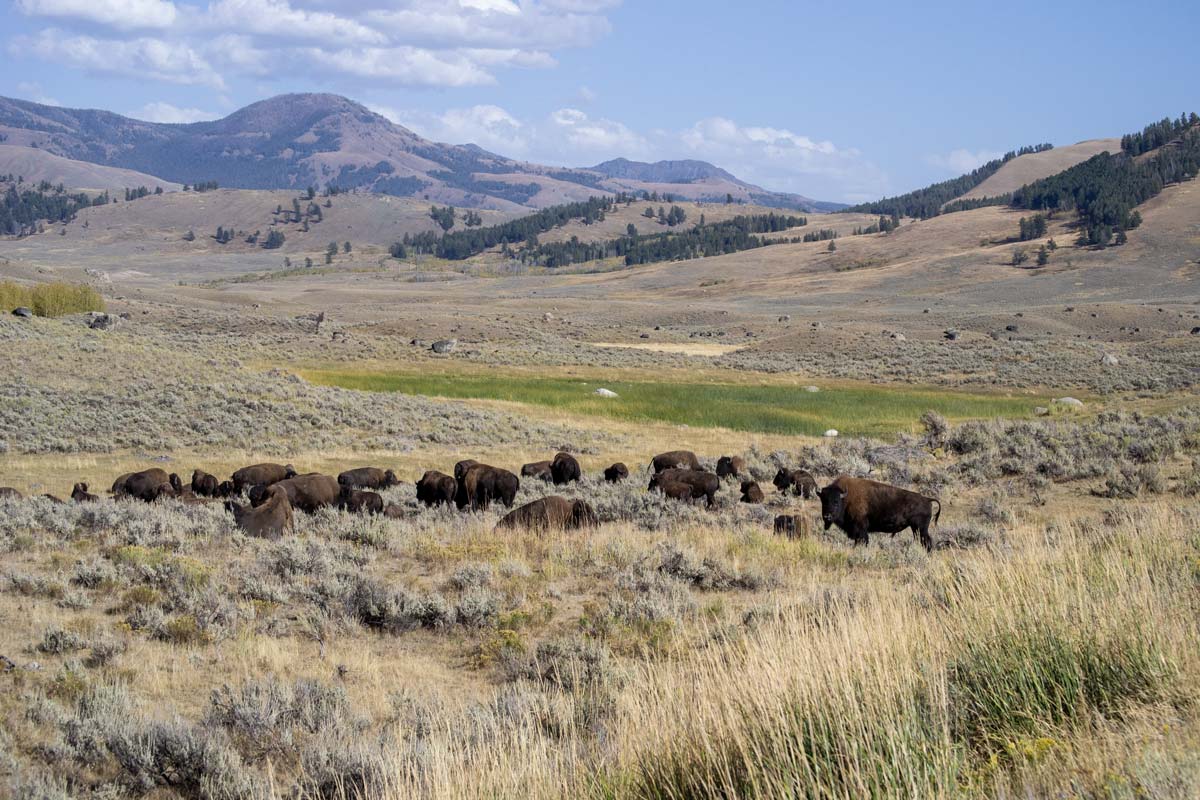
The Ultimate Guide to Wildlife Watching on the Trail
Hiking can be about so much more than the pretty vistas, time in nature, and a solid workout — though we love all those things. If you’re willing to slow down and pay attention to the wildlife sharing the world around you, you can experience a whole new level of excitement and enjoyment during your hikes.
There’s nothing quite like seeing a moose foraging along a creek, a bear climbing a tree, or a herd of bison meandering through a meadow. Sights like these stick in your memory forever, and the pursuit of seeing moments like these can lead you on some pretty epic adventures.
But you don’t need to go anywhere special or see the most impressive wildlife to find awe. Sometimes, spotting a red-winged blackbird on a familiar trail is all it takes to make a successful wildlife hike.
Wherever you go and whatever you see, we encourage you to give wildlife watching a try. Continue reading to learn how to make the most of wildlife watching on the trail and how to stay safe while doing so.
What To Pack

If you’re a frequent hiker, you know what to pack to stay safe and comfortable. You also know it’s best to be over-prepared — because nature isn’t predictable. The same is true when it comes to wildlife watching.
Just like you never know what a day in the backcountry will bring, you never know what kind of wildlife you’ll see — or when you’ll see it. So we suggest packing a few extra supplies to make spotting wildlife a little easier and to keep you comfortable during any downtime.
Along with the rest of your hiking essentials, bring the following on your wildlife hike:
- A field guide: These days, you can find a field guide for just about anything — birds, snakes, bugs, mammals, animal tracks — the list goes on. Not only can a field guide help you identify different species of wildlife, it can provide interesting information about a species — like what it eats, how it lives, and where you might see it.
- Binoculars: Binoculars make it possible to view and ID wildlife from a safe distance. For example, you may want to scan a faraway ridge for bighorn sheep or a distant tree for a bird of prey. Choose a powerful yet lightweight pair for hiking, and practice using them before you hit the trail.
- A journal and art supplies: Recording or drawing what you see can be a fun way to observe the local phenology or document a new trail. Whether you like to write, sketch, or paint, bring a journal and some art supplies on your hike so you can record and remember the wildlife you see.
- A camera: Maybe you prefer documenting your hikes by getting behind the lens. If that’s the case, bring a camera along on your wildlife hike. Again, a lightweight option is preferable, especially for longer hikes.
- Extra layers: Wildlife hikes tend to include lots of stops. So if you’re hiking in cooler weather, you’ll have a harder time staying warm. Dress warmly with warm base layers, merino wool socks, an insulting jacket, waterproof outer layers, and accessories like a hat and gloves.
Wildlife Watching on the Trail

Going on a wildlife-watching hike can be a thrilling, awe-inspiring, and incredibly memorable experience. But it’s important to keep in mind that when it comes to spotting wildlife, there are no guarantees. After all, wildlife is wild. So it’s worth doing some planning to increase your chances of seeing something — and adjusting your expectations so you’ll have a great time no matter what.
- Do your research: Find out what animals you might see in your particular location, in the current season. For example, if you’re visiting Yellowstone in the winter, you wouldn’t expect to see bears. You may, however, have a good chance of spotting wolves.
- Give yourself extra time: When planning a hike to watch wildlife, give yourself plenty of extra time. That means giving yourself more time than you think you’ll need. Part of the joy of wildlife watching is simply observing animals at their own pace, without feeling rushed.
- Hike in the morning or evening: Many animals are crepuscular, meaning they’re most active at dawn and dusk. To increase your chances of seeing these animals, head out early in the morning or wait until evening for your hike. Of course, take proper safety precautions if you’re ever hiking in the dark.
- Choose your location wisely: Choose a trail that makes spotting animals easier. For example, a dense forest may be great for birdwatching, but if you’re hoping to spot a moose, it’s going to be tough to get any good sightlines without getting dangerously close. A good trail provides plenty of views into prime wildlife habitat — from a safe distance.
- Plan hiking trips with wildlife in mind: Consider planning your next hiking trip with wildlife watching in mind. Choose a location known for its wildlife — like Yellowstone, the Everglades, or the Smoky Mountains.
These tips can increase your chances of spotting wildlife on the trail, but they won’t guarantee it. The sheer luck needed to spot wildlife is part of what makes it so special. Regardless of what you see, a quiet hike in nature is never a bad thing.
Put Safety First

If you’ve spent lots of time on the trail, you understand that hiking comes with its own set of risks. And when you’re focused on spotting wild animals in their habitats, there are additional risks to consider. Keeping yourself safe is important, but the same goes for any wildlife you might see.
Researching and preparing accordingly can help you stay safe — and protect the wildlife, too. The following tips can help:
- Keep your distance: Giving wildlife enough space is crucial to your safety and theirs. National Park Service guidelines instruct park visitors to stay at least 25 yards away from wildlife — or 100 yards for bears and other predators. As a rule of thumb, you’re too close when your presence causes an animal to change its behavior.
- Carry bear spray in bear country: If you’re hiking in a new place and unsure whether bear spray is necessary, ask at a local ranger station or gear outfitter. If you do end up needing it, know how to use it before heading out on the trail and keep it within arm’s reach.
- Understand potential risks: Find out how to handle any potential interactions with any wildlife you may see. While negative encounters are unlikely, you should know what to do just in case.
- Don’t bring your dog: As much as you may enjoy hiking with your pup, bringing him on a hike where you expect to see wildlife isn’t the best idea. Not only can it cause stress for the wildlife, it also puts your pet at risk.
- Hike with friends: The old saying is true — there is safety in numbers. This is more relevant when it comes to certain habitats: After all, going on a birding walk may be plenty safe on your own. But if you’re hiking in bear country or anywhere that’s home to bigger, potentially dangerous animals, bring a couple of friends.
- Leave no trace: This code of outdoor ethics applies to wildlife watching, too. After all, “Respect Wildlife” is one of the Leave No Trace principles. Give wildlife distance, never feed or approach them, and treat their habitat with respect. Avoid closed trails and sensitive habitat areas.
Seeing wildlife on your hike is no doubt a magical experience. Even one particularly special experience can spark a lifelong outdoor passion. Just make sure you do your research, keep your distance, and stay safe.
Want more hiking and outdoor adventure tips delivered straight to your inbox?
Subscribe to our email newsletter to receive our latest blog posts, announcements, and deals on your favorite hiking socks. Happy trails!




